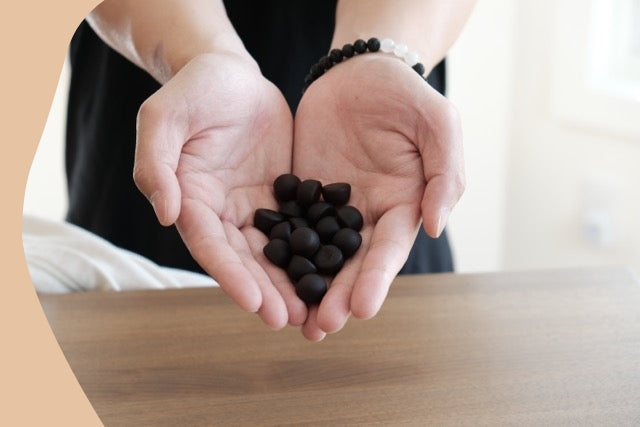
Why is Gratitude Not Working for You?
Are you excited about this year’s holiday season? Did Thanksgiving gift ideas and turkey recipes take over your social media feed yet?
In the midst of all this holiday madness, let us not forget the reason for the season: The gesture of giving thanks.
An enormous amount of research points to how amazing gratitude is for your emotional and mental wellbeing. In fact, one of the top therapist-recommended practices for mental health issues is gratitude journaling.
But despite how much you try, are you one of those people for whom practicing gratitude is simply not working?
If you’re feeling this way, look no further. You’ve come to the exact right place! Down below, we explore everything you need to know about gratitude. What’s more, we even discuss a psychology-backed reason for why gratitude is not working for you and what you can do about it.
But before we get to that, do you really know what gratitude means?
What Exactly is Gratitude?
Gratitude is so much more than merely flashing a huge smile and saying thank you to the person at your local grocery check-out counter. Please and thank you are a (much-needed & welcomed) thing people still say. However, gratitude goes beyond these social protocols.
Your therapist-recommended gratitude practice is a heartfelt appreciation for what you are blessed with and what you have in life.
Gratitude allows us to enter a self-introspection zone, the goal of which is to reflect positive vibes.
Why Gratitude is Not Working for You
Have you noticed how everybody on and off social media can’t stop glorifying gratitude? You know that talk, right?
The “OMG! Gratitude journaling is so amazing” spiel? Yeah, that one!
The minute you hear it, you want to run a mile away. Because maybe for you, gratitude is hard. Maybe it makes you angrier and sadder. You are sick of gratitude talk and are even considering keeping an ingratitude list.
Yes, it exists. We checked!
But we’d hate for you to give up all hope. So, read on as to exactly why gratitude practice is not working for you.
Gratitude as a Thought vs. Feeling

Firstly, let’s clarify what thoughts and feelings are.
Per the work of Dr. Joe Dispenza and Dr. Nicole LePera, thoughts are the language of the mind. Feelings or emotions are what your body and heart process with the help of hormones.
Gratitude as a Thought
When asked to “list five things that you are grateful for today,” your list likely looks like:
- My family
- My pet
- My job
- My home
- My friends
Such a list is amazing, isn’t it? Then why doesn’t it work? What’s missing?
We’ve been conditioned our whole life to be grateful for what we have. While this is awesome, here’s some food for thought: This conditioning happens in the thinking region, not your feeling region. So, when you fill out your gratitude journal, the conditioned brain is activated (on auto-pilot, without your conscious awareness).
Gratitude practiced in this way is a “thought.” Our thoughts and feelings need to align and sync up for results to manifest.
Using thought gratitude in this way (e.g., for addressing anxiety) goes in vain. Why? Because your thought says, “I’m grateful.” Your feelings say, “I’m anxious” (racing heart, cramps in your gut, and other anxiety symptoms).
With an active out-of-sync thoughts and feelings conflict happening in your mind and body, your gratitude practice might not produce the desired results. And suffice it to say, can be fairly frustrating.
Make sure to read How to Break Out of a Chronic Worry Loop to learn how you can cope with spiraling thoughts that hinder your gratitude practice.
Gratitude as a Feeling
Gratitude is an elevated emotion. As a feeling, it’s vastly different from thought gratitude. It’s a heart-centered emotion versus, say, stress, which is rooted in survival mode.
The feeling of gratitude is a trigger for the mind and body to feel abundance.
Per the law of attraction, a mindset of abundance attracts further abundance into our lives. This, in turn, sets into motion a gratitude-abundance cascade effect. Ultimately the Heart chakra is activated, and we experience an overwhelming feeling of gratitude for what we have and are yet to receive.
Can you now see why gratitude as an emotion works?
A Gratitude Practice That Can Transform Your Life
As discussed above, we give thanks for what we already have in life. However, in feeling grateful for what we are about to receive (a wish list that hasn’t yet manifested in our life), we can trick our minds, bodies, and souls to create a new reality.
Did you read that and go, “Say what….? How can I give thanks for what I don’t even know I’m about to receive?”
Here are a few steps to help with this process:
- Make a wish list.
- Don’t pause and analyze how realistic your wish list is or isn’t.
- Meditate or visualize a scenario where this wish list has already manifested. Play out a “day in my life” (future life). Visualize how overjoyed and grateful you are with this manifestation.
- Post your visualization session when you re-enter your current life and resume your daily tasks. Remember to remain in this elevated emotional state of gratefulness, joy, and abundance throughout the day for as long as possible.
Repeat the above steps every day and watch as your new reality unfolds in front of you in no time.
The Attitude of Gratitude
Gratitude has the ability to change your life.
It can make you emotionally stronger and can even help you sleep better. We even have an entire season dedicated to it! So, what better time to start (or) re-start your gratitude practice than during this upcoming Thanksgiving season?
With this article, we hope you no longer have to feel that gratitude does not work for you. Follow us on Instagram and share the ways you’ve been able to use this new gratitude practice to help transform your life.
Read 5 Ways to Practice Daily Gratitude for more ideas for your gratitude practice!






